Romania is a country in eastern Europe. Alternate spellings for the country’s name have included Rumania and Roumania. Romania was part of the Roman Empire during ancient times, and its name means land of the Romans. The Romanian people are the only Eastern Europeans who trace their ancestry and language back to the ancient Romans. Bucharest is Romania’s capital and largest city.

Romania is located west of the Black Sea and north of the Balkan Peninsula, Europe’s southeastern tip. A long string of mountains curves through the northern and central parts of Romania. Breathtaking scenery, hiking trails, and ski and vacation resorts make the mountains a favorite recreation area. Picturesque farm villages dot fertile flatlands around the mountains. In addition, Romania’s warm, sunny east coast—which borders the Black Sea—has dozens of sandy beaches and a huge wildlife preserve.

The colorful folk culture of Romania’s rural people adds to the beauty and charm of the country. Each year, these people hold festivals at which they dance to the lively sounds of Romanian folk music. This music was influenced by the melodies of music played by the Roma (sometimes called Gypsies), a nomadic people who once wandered through Romania by the thousands.
Romania has a wealth of natural resources, including fertile soil, mineral deposits, and vast forests. Even so, it has always been one of Europe’s least developed nations. Foreign nations controlled the country through much of its history and did little to develop its economy. Romania also suffered from an overdependence on one economic activity, agriculture.
Communists took over Romania’s government in the 1940’s. At first, they ran the country according to the wishes of the Soviet Union, which was Europe’s strongest Communist nation. However, beginning in the 1960’s, Romania’s Communists succeeded in reducing Soviet control of the country. In addition, they adopted their own domestic policies. Chief among these policies was a program to expand industry. As industry grew, many people left rural areas to find jobs in cities. The industrial program changed Romania from an agricultural country to an industrial country. However, Romania still remains poor by European standards.
In the late 1980’s, the Soviet Union made reforms toward giving its people more freedom. As a result, reform movements increased in Romania and other European Communist countries. In late 1989, Romanians revolted against the dictatorship of Nicolae Ceausescu, Romania’s president and Communist Party leader. Ceausescu was executed, and a temporary government was set up. Free multiparty elections have been held since 1990.
Government
The Communist Party became Romania’s ruling political party in the 1940’s. It exerted its power over the country’s entire governmental structure. Only a small percentage of Romania’s people belonged to the Communist Party. However, Communist leaders held important positions at all levels of government and in major nongovernmental organizations. The general secretary, who headed the Communist Party, had the authority of a dictator.
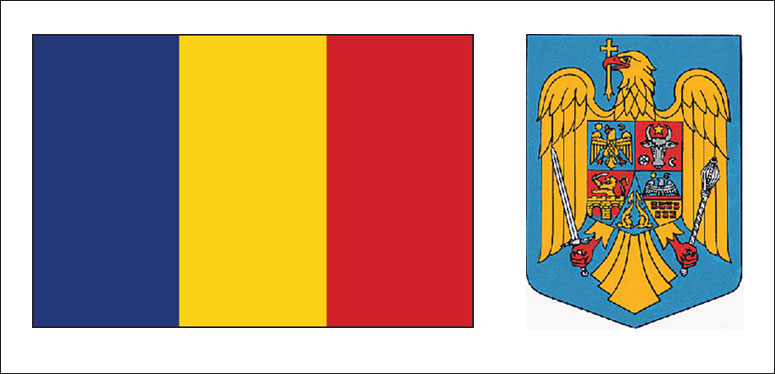
The Communist Party leaders made the country’s laws and planned every detail of its economy. They also controlled Romania’s police and armed forces, and therefore had power over the lives of the people.
Romania’s Constitution guaranteed such rights as freedom of speech, freedom of the press, and freedom of religion. However, the Communists interpreted the Constitution to mean that they could limit these rights in order to maintain power.
In December 1989, Romanians revolted and overthrew the Communist government. Free multiparty elections to select a president and members of a national legislature were held in mid-1990. Romania adopted a new Constitution in late 1991.
National government.
Romania’s top government official is the president, who is elected by the people to a five-year term. The president appoints a prime minister, who selects a Cabinet to help carry out the operations of government. Romania’s parliament consists of the Senate and the Chamber of Deputies. The people elect the members to four-year terms.
Local government.
Romania is divided into 41 counties and 1 special district, the city of Bucharest. Each unit has its own local government, as do cities, towns, and communes (rural areas) within the counties.
Courts.
The High Court of Cassation and Justice is Romania’s highest court. It hears appeals from the country’s lower courts. The city of Bucharest and each of Romania’s counties have a county court and a variety of lower courts.
Armed forces.
Romania has an army, navy, air force, and special armed forces. Service is voluntary.
People
Ancestry.
About 90 percent of Romania’s people are Romanians by ancestry. The Romanians are descended from the Dacians, Romans, and such tribes as the Goths, Huns, and Slavs. The Dacians lived in what is now Romania as early as the 300’s B.C. The Romans occupied the country in the A.D. 100’s and 200’s, and the tribes began living there after the Romans left.
Hungarians form the largest minority group in Romania, making up about 6 percent of the population. Roma (sometimes called Gypsies) make up about 3 percent. Smaller groups include Germans, Jews, Turks, and Ukrainians.
Language.
Romanian is the nation’s official language and is spoken by almost all the people. Many of Romania’s Germans and Hungarians prefer to speak their own ethnic languages among themselves.
Romanian developed from Latin, the language of the Romans who ruled the country in ancient times. Romanian is the only Eastern European language that comes from Latin. As a result, it is much different from all the other languages that are spoken in the region. Romanian most closely resembles French, Italian, Portuguese, and Spanish. These Western European languages also developed from Latin.
Way of life.
The Romanian people have one of the lowest living standards in Europe. Almost all of the workers in Romania earn enough to pay for their families’ food, clothing, and shelter, and have a little left over for recreation. But few Romanians can afford many luxury items. 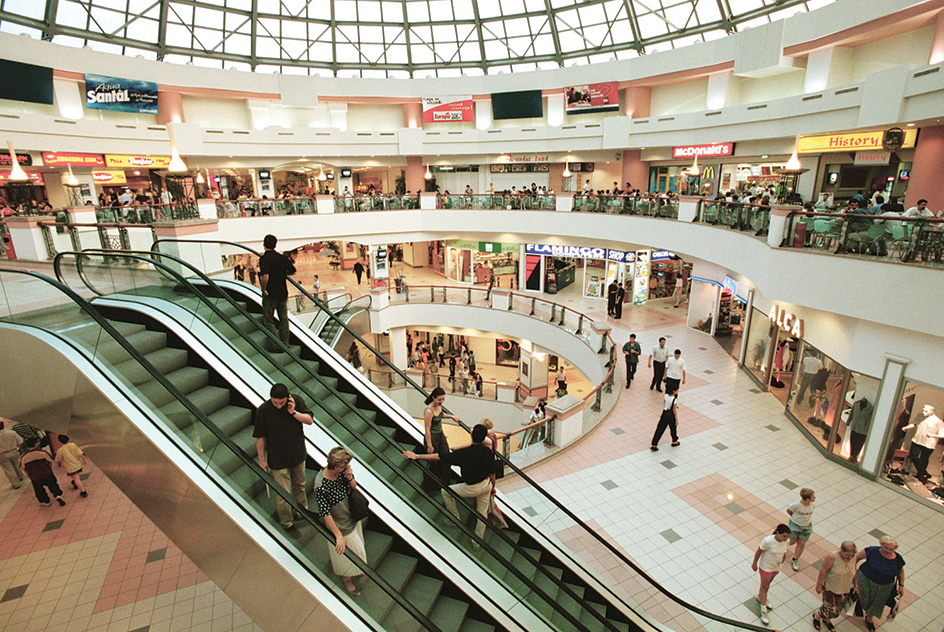
Most rural Romanians live in two- or three-room wooden cottages. The houses are plain and simple, but many people beautify them with a variety of art objects that they make themselves. These objects include wall rugs with skillfully woven patterns, colorfully decorated plates, and woodcarvings on furniture, building frames, and fences.
Festivals held to celebrate such things as weddings, christenings, and holidays are the most important part of social life in rural Romania. At the festivals, the people wear colorful costumes, and they play and dance to Romanian folk music. Loading the player...
Romanian wedding dance
Romania’s cities present a striking contrast between the old and the new. Many city buildings are hundreds of years old. Others are modern structures built since industrialization began in the 1960’s. Population growth has caused a housing shortage in the cities. Most city people live in crowded apartments.
Both old Romanian traditions and modern, Western culture are part of city life. Many people enjoy going to restaurants and to concert halls where orchestras play Romanian folk music. They also visit exhibits of rural Romanian folk art that the government sets up in cities. But many people—especially the young—like rock music and Western movies, plays, and books.
Before the 1989 revolt, the lives of the Romanian people were affected by the Communist government in many ways. The government decided what kind of jobs students should prepare for in school. It owned or managed most of the country’s businesses and farms, and so almost all the people worked for the government. Romanians could not change their jobs or leave the country without the government’s permission. After the revolution, the non-Communist government lifted most of these restrictions.
Recreation.
Romanians have two favorite vacation spots—the mountains and the Black Sea coast. The mountains offer skiing, hiking, mountain climbing, and beautiful scenery. Romanians go to the Black Sea coast to swim and to relax in the sun. Soccer is the most popular spectator sport in Romania.
Food and drink.
Romanians enjoy grilled meats, including mititei (meat balls shaped like cylinders) and patricieni (sausages). Another favorite food in Romania is mamaliga, a bread or mush made from corn meal, which can be cooked and served in many ways. Wine and a plum brandy called tzuica are popular drinks in Romania.
Education.
Romanian law requires children from 6 to 16 to attend school. Elementary school lasts eight years. Students then take tests that are prepared by the government to determine what kind of course they will study in secondary school. About half the students are assigned to vocational courses. These students learn the basic skills that are needed for work on farms or in factories. Most of the other students take courses that train them in advanced technical skills, in the arts, or in teaching. The top elementary school graduates—about 5 percent of the total—are assigned to courses that prepare them for college.
Romania has many universities. The largest ones are in Bucharest, Cluj-Napoca, Craiova, Iaşi, and Oradea.
Religion.
About 80 percent of all Romanians belong to the Romanian Orthodox Church, an Eastern Orthodox Church. About 5 percent of the people—chiefly Hungarians—are Roman Catholics. Other faiths that are practiced in Romania include Islam, Judaism, and various forms of Protestantism.
In order to avoid popular protests, the prerevolution Communists allowed churches to operate as long as the churches avoided political activities. After the revolution, the churches were granted complete religious freedom.
The arts.
Romania’s rural culture has had a strong influence on the country’s professional art. The lives and customs of rural Romanians have long been favorite topics of Romanian writers. The works of many composers show the influence of Romanian folk music. The best-known Romanian paintings are medieval works that appear on the outside walls of churches. These works were done outside, rather than inside, to remind peasants passing by of their faith.
In the 1950’s, the government forced Romanian artists to use their works to promote Communism. Romanian art grew dull from a lack of self-expression. However, since the 1960’s, the government has allowed artists more freedom, and art has flourished in Romania. Old Romanian themes and styles are still popular. But many artists have turned to modern styles, and deal with such themes as humanity’s relation to the universe.
The composer Georges Enesco, the sculptor Constantin Brancusi, and the playwright Eugene Ionesco probably rank as the best-known Romanian-born artists. But each man did most of his work in France. Enesco’s masterpieces, called Romanian Rhapsodies, are based on Romanian folk music. Some of Brancusi’s sculptures contain elements of Romanian folk art. Ionesco’s plays show some influence of his youth in Romania before the outbreak of World War II in 1939.
Land and climate
Romania is bordered on the north and northeast by Moldova, on the east by Ukraine, on the west by Hungary and Serbia, and on the south by Bulgaria. The country has only 130 miles (209 kilometers) of coastline, where it borders the Black Sea in the southeast.
Surface features.
A series of mountain ranges curves through northern and central Romania, forming a circular pattern. The mountains surround a vast flatland known as the Transylvanian Plateau. The mountains are, in turn, surrounded by plains on the east, south, and west.
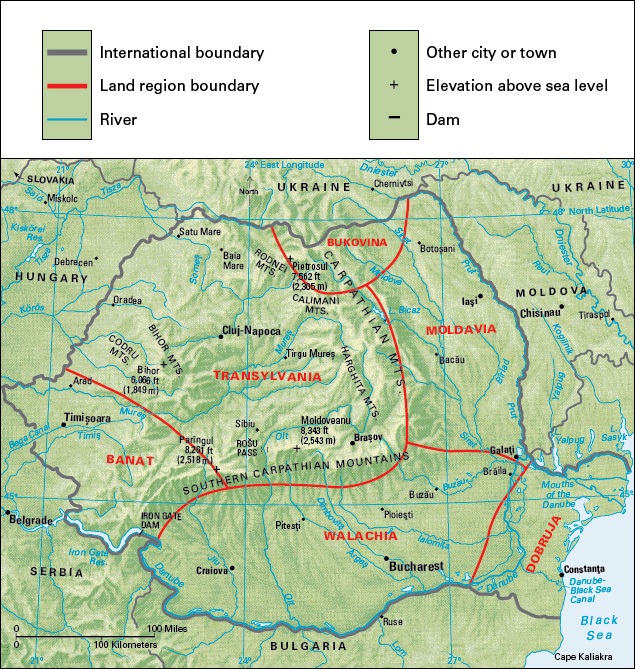
Romania’s mountains are all part of the Carpathian Mountain System. The eastern part of the Carpathian range extends from the northern border to the center of the country. The Southern Carpathians, or Transylvanian Alps, stretch westward across the center of the country. The Bihor Mountains and other ranges make up the Western Carpathians, which run through western Romania.
Romania’s mountains are neither extremely high nor steep, and several passes cut through them. As a result, they are not major barriers to transportation. Most of them are from 3,000 to 6,000 feet (910 to 1,800 meters) high. Mount Moldoveanu, in the Southern Carpathians, is Romania’s highest mountain. It rises 8,343 feet (2,543 meters).
The Transylvanian Plateau lies about 1,200 feet (366 meters) above sea level, and Romania’s plains lie at or near sea level. These flatlands have the country’s best farmland and most of its cities and towns. Vast forests cover parts of the Transylvanian Plateau and the mountains.
Romania has many rivers. The longest and most important one by far is the Danube River. It flows about 900 miles (1,400 kilometers) through Romania. Most of the way, it flows west to east along the southern border. The Danube turns northward near the Black Sea, then eastward again, and empties into the sea. Most of Romania’s other major rivers flow into the Danube from the north. They include, from west to east, the Jiu, Oltul, Arges, Ialomita, Siretul, and Prut.
Romania has about 2,500 lakes. Most of them are small. The biggest lakes lie near the Danube. Numerous tiny lakes add beauty to Romania’s mountains.
Land regions.
Romania can be divided into six land regions. They are Transylvania, Bukovina, Moldavia, Walachia, Banat, and Dobruja.
Transylvania
is the country’s largest and most varied region. It extends throughout central and northwestern Romania, and includes most of the country’s mountains, the Transylvanian Plateau, and the northwestern plain. The plateau and plain have good soil for farming. The plateau and the mountains yield valuable forest products and minerals. The beauty of the mountains and their ski slopes and other recreation facilities make them a favorite vacation area. Several cities have grown up in Transylvania because of its rich resources. 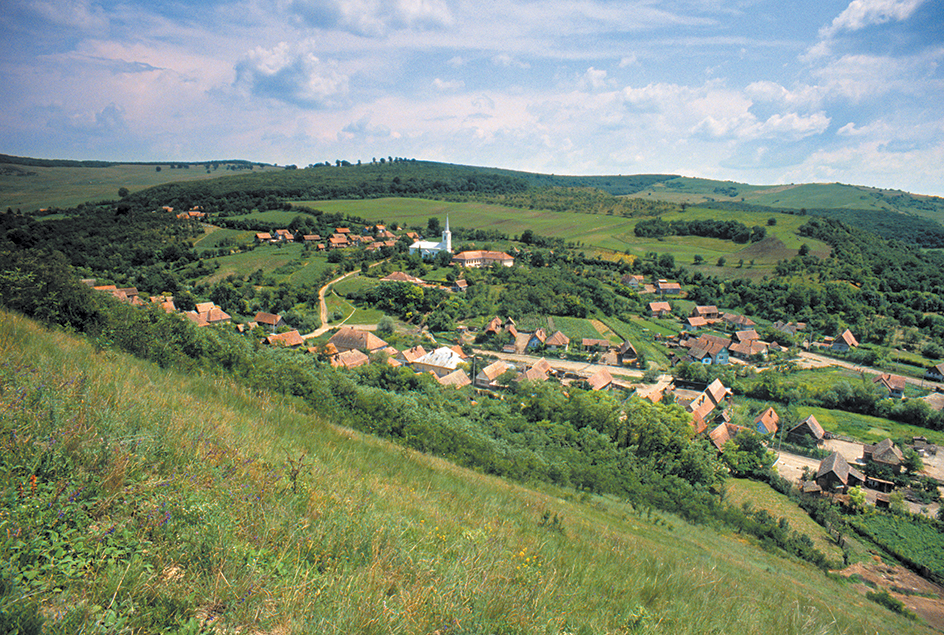
Bukovina,

northeast of Transylvania, is a thickly forested region in the northern Carpathian range. It has ski slopes and lovely scenery. The people of Bukovina live in small villages in the valleys.
Moldavia, Walachia, and Banat.
Moldavia, in northeastern Romania, extends from Transylvania to the Prut River along the border with Moldova. Walachia, in the south, stretches from the southernmost mountains to the Danube. Banat, in western Romania, extends from the western mountains to Serbia and Hungary. All of these regions have a similar physical makeup. The land in each descends from mountains near Transylvania, to hills, and then to plains. These plains are Romania’s best farmland. Walachia has more people than any other Romanian region, chiefly because Bucharest is there. Banat has several cities, but Moldavia has few. 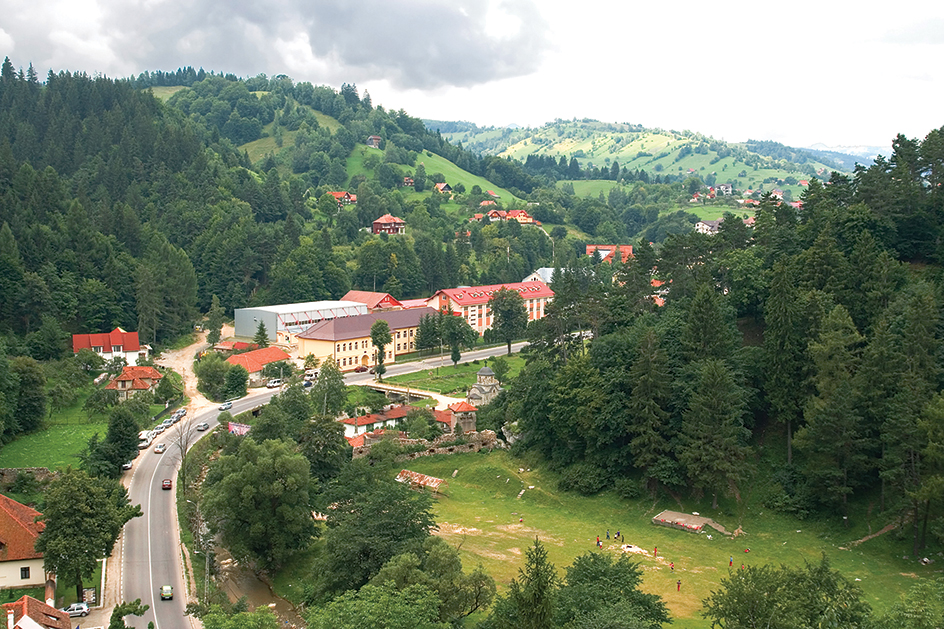
Dobruja
is a small plain between the northern course of the Danube River and the Black Sea. The Danube Delta covers northeastern Dobruja. This marshy area has an amazing variety of wildlife. Sturgeon, the source of caviar, and numerous other kinds of fish live in its waters. About 300 species of birds, including the pelican, also live in the delta. Farmland covers most of southern Dobruja. The Danube-Black Sea Canal flows through this area. Completed in 1984, it provides a shortcut from the Danube to the Black Sea. Sandy beaches and beautiful seaside resorts line Dobruja’s Black Sea coast. Constanţa, Romania’s major port city, is on the coast.
Climate.
Romania has hot, sunny summers and cold, cloudy winters. The average July temperature is 70 °F (21 °C), and the average January temperature is 30 °F (–1 °C). Romania’s plains are warmer than its mountain areas. Precipitation (rain, melted snow, and other forms of moisture) ranges from about 40 inches (100 centimeters) yearly in some mountain areas to less than 20 inches (50 centimeters) on the plains.
Economy
Romania is rich in natural resources, including fertile soil, mineral deposits, and vast forests. Even so, it has always been one of Europe’s least developed nations. Before the 1960’s, Romania’s economy was based on agriculture. But since then, the government has built new factories and power plants and taken other steps to increase industry. Under the Communist government, industry—including manufacturing, mining, and construction—passed agriculture as the leading producer of income in Romania. Industry also passed agriculture as the leading employer. Today, service industries are both Romania’s leading producer of income and its leading employer.
Under the Communists, the national government controlled Romania’s economy. After the 1989 revolution, the non-Communist government loosened government control of the economy and allowed some private enterprise. In 1992, the country began to sell shares in state-owned companies. However, the shift to a market-based economy has been slow moving. In 2007, the country joined the European Union, an organization of European countries that cooperate in economics and politics.
Natural resources.
About 60 percent of Romania’s land is fertile cropland and rich pastureland. Another 30 percent has forests that provide timber. The mountains and plateau have valuable mineral deposits. Natural gas and petroleum are important mineral products. Romania also mines coal, copper, gold, iron ore, lead, silver, and zinc.
Industry.
Romania had very little industry when the Communists took over. To get industry started, the Communists stressed the production of capital goods. Capital goods include raw materials needed for industry, buildings in which industrial work is done, machines and tools needed to do the work, and power plants that supply energy for the work.
Today, much of Romania’s total workforce is employed in manufacturing. Romania produces automobiles, cement and other construction materials, clothing, furniture, machinery, petroleum products, pharmaceuticals (medicinal drugs), processed foods, steel, textiles, tractors, and wood products. Bucharest is the chief industrial center. Other industrial centers include Brasov, Cluj-Napoca, Ploiesti, and Timişoara.
Services.
Service industries account for over half of both Romania’s total employment and its gross domestic product (GDP). The GDP is the total value of all goods and services produced within a country in a year. Trade and transportation are the leading employers among service industries in Romania. These industries are responsible for getting the country’s agricultural and industrial products from producers to buyers. Hotels, restaurants, and shops especially benefit from the millions of tourists who visit Romania each year. Many of these tourists visit from Bulgaria, Hungary, Moldova, and Ukraine.
Agriculture.
Agriculture employs much of Romania’s workforce. However, it accounts for less than 5 percent of the country’s GDP. Corn and wheat are the leading crops. Other important crops include apples, barley, grapes, potatoes, sugar beets, sunflower seeds, and tomatoes. Milk is the country’s most valuable agricultural product. Farmers also raise beef cattle, chickens, hogs, and sheep. 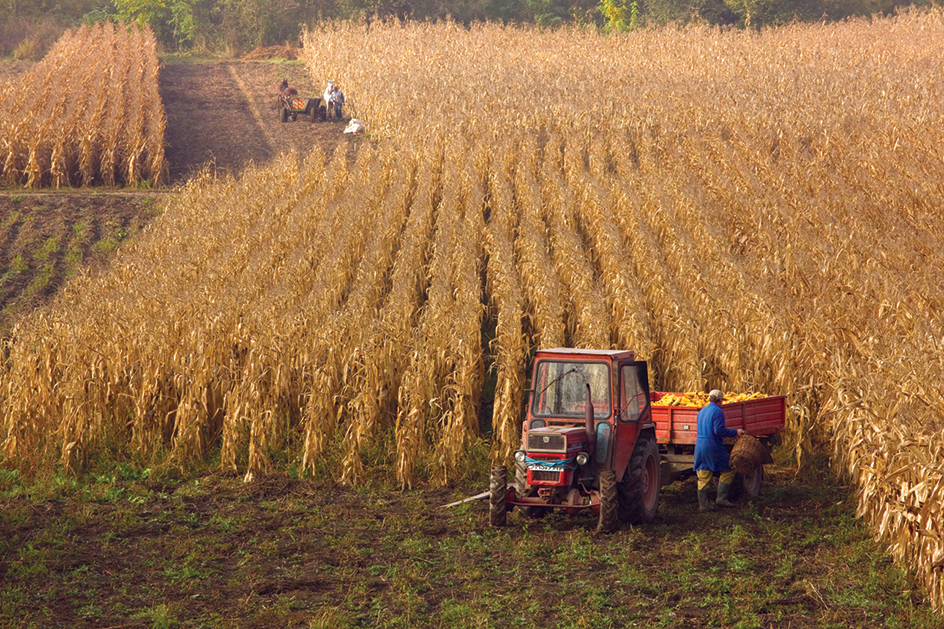
In pre-Communist days, almost all of Romania’s farmland was privately owned. But the Communist government gradually took control of almost all the land. It created collective farms and state farms. After the 1989 revolution, the government passed land-reform laws that allowed some collective farms to be broken up and their land redistributed to farmworkers. At first, the land-reform laws did not break up state farms. But in the late 1990’s, the government began to break up some state farms. Today, the majority of agricultural land is privately owned.
Trade.
Romania imports more than it exports. Machinery, petroleum products, and transportation equipment are important both as exports and as imports to Romania. Other exports include clothing, corn, iron and steel, and wheat. Crude petroleum, electrical equipment, plastics products, and processed foods are other major imports.
Until the 1960’s, Romania carried on about 80 percent of its trade with the Soviet Union and other Communist nations. But in the 1960’s—as part of its policy to free itself from Soviet control—the country began expanding its trade with Western European nations and the United States. The Soviet Union broke up in 1991. Today, Romania’s major trading partners include Bulgaria, France, Germany, Hungary, Italy, the Netherlands, Poland, Russia, Turkey, and Ukraine.
Transportation and communication.
Trains are Romania’s chief means of long-distance travel. The roads away from urban areas are generally unpaved and in poor condition. Bucharest, Cluj-Napoca, and Timişoara have international airports. The government owns a large share of TAROM, the country’s national airline. Constanţa has a port on the Black Sea. Brăila, Galaţi, Giurgiu, and Tulcea have ports on the Danube River.
Dozens of newspapers are published in Romania. Leading daily papers include Adevarul, Evenimentul Zilei, Jurnalul National, and Libertatea. Radio and television stations operate under both private and state ownership.
History
Romanians trace their history back to the 300’s B.C. But Romania did not become an independent, unified country until the mid-1800’s. During most of the time in-between, various foreign peoples ruled all or part of Romania.
Early days.
Historians do not know when Romania was first settled. But a people called the Dacians were known to be living there by the 300’s B.C. The Dacians farmed, mined gold and iron ore, and traded with neighboring peoples. Romania was called Dacia during this period.
The Romans, under Emperor Trajan, conquered Dacia in A.D. 106 and made it a province of the Roman Empire. Roman soldiers occupied Dacia, and Roman colonists settled there. The Romans intermarried with the Dacians, who adopted Roman customs and the Latin language. Dacia became known as Romania because of the Roman occupation and influence.
Non-Roman peoples from the east and north began invading Romania during the A.D. 200’s. They forced the Romans to abandon the province in the late 200’s. The invasions were to continue off and on until the 1100’s. The invaders included Bulgars, Goths, Huns, Magyars, Slavs, and Tatars. These groups, especially the Slavs, intermarried with the Romanians.
Unification movement.
The period of invasions slowed the development of Romania into a unified nation. For hundreds of years, various groups fought for control of the region, and no one group gained full control. The first steps toward unification took place between 1250 and 1350. The people of Walachia, a region in southern Romania, gradually united and formed an independent state under a single ruler. The people of Moldavia, in eastern Romania, did the same. A prince ruled each state, and so they were called principalities. 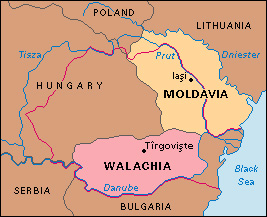
Earlier, during the 1000’s, Hungary had taken over most of what is now northern Romania. This area, called Transylvania, had many Romanian people. But it did not become part of Romania until the 1900’s.
Ottoman rule.
The independence of the principalities was short-lived. The Ottomans of Asia Minor (now part of Turkey) swept into Europe in the mid-1400’s. They conquered Walachia in 1476 and Moldavia in 1504. The Ottoman Empire ruled these lands almost continuously for over 300 years. The peasants in the principalities—who made up most of the population—led hard lives even before the Ottomans took over. They were farmers living in poverty, but they had to pay high taxes to the ruling nobles. Conditions grew worse under the Ottomans, who let Romanian nobles rule in their name, but demanded increased taxes from the peasants for themselves.
The Romanian nobles made several attempts to gain freedom from the Ottoman Empire. As a result, in the early 1700’s, the empire sent wealthy Greeks to govern the principalities. These Greeks were called Phanariots because they came from the Phanar district of Constantinople (now Istanbul, Turkey). They taxed the peasants far more than ever before and treated them harshly. Phanariot rule lasted until 1821, when a revolt by Romanians forced the Ottomans to remove the Greeks from power. Many scholars believe that Romania’s peasants never suffered more than they did during the Phanariot period.
Russian control.
During the late 1700’s, the Ottoman Empire suffered a series of military defeats at the hands of Russia. Little by little, the Ottomans lost parts of their empire. Officially, Ottoman rule of the principalities lasted until 1878. But, in effect, it ended in 1829, when Russian troops occupied the principalities.
Russia drew up a constitution for the principalities in the early 1830’s. The constitution, called Organic Statutes, gave governing power in each principality to an assembly of nobles. This marked the beginning of representative government in Romania. Russia’s troops withdrew from the principalities in 1834.
The origins of modern Romania.
The idea of uniting Moldavia and Walachia existed almost from the time the principalities were founded. The unification movement grew rapidly during the mid-1800’s. In 1859, the assemblies of the two principalities elected Prince Alexander John Cuza as their common ruler. In 1861, Moldavia and Walachia, unified under the name Romania, received international recognition. 
Many of the leaders of the unification movement were young Romanians who had studied in Paris. There, they learned about a revolutionary spirit that was sweeping through Europe. Many Europeans were demanding an end to undemocratic government and calling for improvements in living conditions for the lower classes. The young Romanians demanded reforms after they returned home. Prince Cuza responded. His government bought much land from wealthy Romanians and gave it to peasants. It also increased the number of free schools for the poor. Many of the wealthy Romanians opposed Cuza. They forced the prince to resign in 1866.
The wealthy Romanians selected Karl of Hohenzollern to replace Cuza. Karl was a German prince who knew little about Romania. According to one story, he even had to consult a map to learn where the country was. But he was to rule Romania for nearly 50 years.
Karl took the name Prince Carol. In 1878, the major nations of Europe officially recognized Romania’s full independence from the Ottoman Empire. In 1881, Romania became a kingdom, and Carol became King Carol I.
At the start of Carol’s reign, Romania’s first political parties were established, and the people were given the right to elect their government representatives. But a complex election system kept the peasants from having many representatives. Romania’s economy improved under Carol. Wealthy Romanians benefited from the economic growth, but the peasants gained little from it. In 1907, Romania’s peasants revolted. They burned the houses and destroyed the crops of many wealthy landowners. The Romanian Army put down the revolt, killing at least 10,000 peasants. Carol died in 1914, and his nephew Ferdinand became king.
World War I
was fought from 1914 to 1918. Romania remained neutral at first. But in 1916, it joined France, the United Kingdom, and the other Allies in their fight against the Central Powers (chiefly Austria-Hungary and Germany). Romania wanted to gain Banat, Bukovina, and Transylvania—three provinces of Austria-Hungary that had large Romanian populations. The Allies won the war, and Romania received the territories it wanted as part of the peace settlement. As a result, Romania about doubled in size and population. For the first time, Romania’s territory included almost all the land where large numbers of Romanians lived. 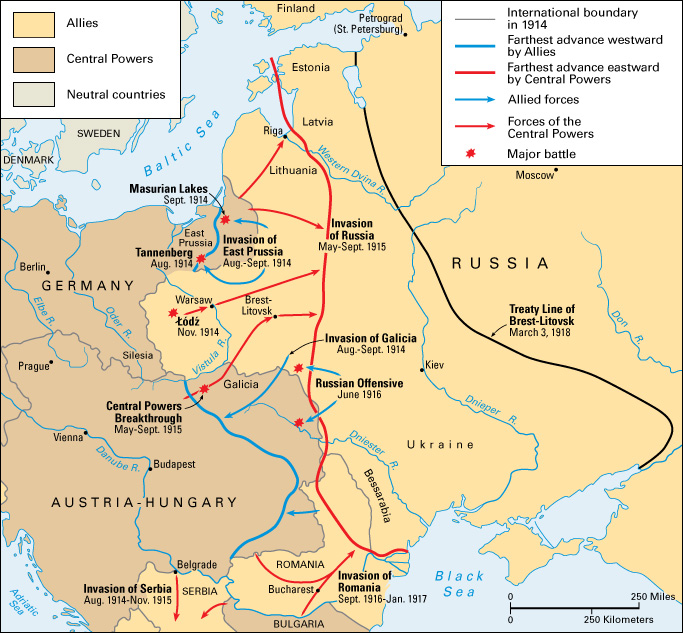
Depression and fascism.
Liberal political parties headed Romania’s government after World War I. They divided the estates of many of the wealthy landowners into small farms and sold the farms to peasants. The liberals wanted to continue helping the peasants, but a worldwide depression that began in 1929 destroyed the economy of Romania. Millions of Romanians lost their jobs, and poverty became severe throughout the country.
Romania’s economic problems caused many people to seek new leadership in the early 1930’s. The Iron Guard soon became a strong authoritarian movement. Its followers were fascists who sought to destroy Romania’s government and establish a dictatorship. This group used terror against its political opponents and blamed Communists, Jews, and liberals for Romania’s problems.
King Ferdinand died in 1927, and his son Carol became King Carol II three years later. The popularity and power of the Iron Guard grew during the early years of Carol’s reign. Fearing a loss of his own authority, Carol made himself dictator of Romania. He outlawed the Iron Guard and all political parties. 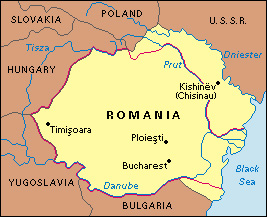
World War II
began in Europe in September 1939, as a struggle between Germany and the Allies—a group of nations led by France and the United Kingdom. Romania remained neutral at first. By June of 1940, Germany had gained a great military advantage over the Allies. Germany allowed Hungary to take northern Transylvania from Romania. The Soviet Union took part of northeastern Romania. Bulgaria took territory in the southeast.
The territorial losses turned the people against King Carol, and he gave up his throne on Sept. 6, 1940. Carol’s son Michael became king, but Premier Ion Antonescu ruled. Antonescu cooperated with Germany, and German troops occupied Romania in October. Romania then joined the war on the side of Germany. Between 280,000 and 380,000 Jews died under Romanian rule during World War II , along with more than 12,000 Roma.
By August 1944, the tide of the war had turned against Germany. King Michael then overthrew Antonescu, and Romania joined the Allies. The war ended in 1945, and the Allies took northern Transylvania from Hungary and returned it to Romania. The Soviet Union and Bulgaria kept the Romanian territory they had taken.
Communist control.
The Soviet Union had been formed as a Communist nation under Russia’s leadership in 1922, and it existed until 1991. During World War II, the Soviet Union fought on the side of the Allies. Soviet troops occupied Romania in 1944 and stayed there until the late 1950’s. 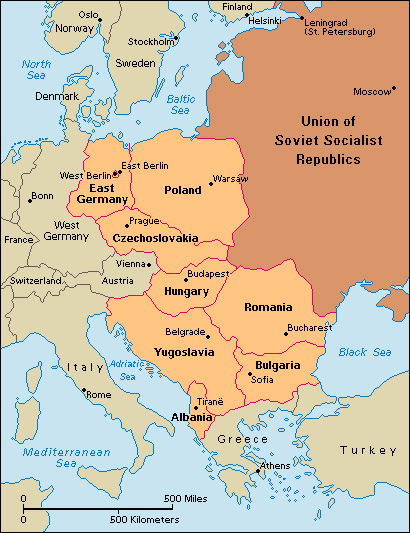
Romania’s Communist Party had never been strong before World War II. But under the protection of the Soviet troops, Romanian Communists took over the government after the war. They killed or imprisoned their political opponents, and forced King Michael to give up his throne on Dec. 30, 1947.
The Communists declared Romania an “independent people’s democracy.” But Romania was a Soviet satellite (country controlled by the Soviet Union). In 1948 and 1952, Romania adopted constitutions that praised the Soviet Union. Romania’s government, educational system, and other institutions were modeled on those of the Soviet Union. Soviet leaders directed Romania’s economy and forced the country to emphasize agriculture and neglect industry. They also set foreign policy.
Opposition to the Soviet Union.
Resentment of Soviet interference in Romania’s affairs grew during the 1950’s. In the early 1960’s, Romania’s Communists—led by Communist Party head Gheorghe Gheorghiu-Dej—began to oppose this interference openly. Gheorghiu-Dej died in 1965. Nicolae Ceausescu, who succeeded him as party head, continued the opposition.
In 1962, Romania insisted that each Communist country should be free to develop its own economic system, trade freely with all nations, and make its own foreign policy. Romania’s leaders then began expanding industry and increasing trade with Western nations. In 1964, Romania exchanged ambassadors with the United States. Romania’s leaders hosted a visit by U.S. President Richard M. Nixon in 1969. They also declared Romania neutral in a dispute between the Soviet Union and China. In 1965, Romania adopted a Constitution that called for the nation’s complete independence. In 1977, Romania began strengthening its ties with the nations of the nonaligned movement. These nations, primarily in Asia and Africa, had refused to support either the Communist or non-Communist bloc.
Also in 1977, an earthquake struck Bucharest and other parts of Romania. It caused about 1,500 deaths and over $1 billion in damage.
The government’s industrialization policy increased the size of Romania’s urban communities. Each year, thousands of young people moved from rural areas to cities to work in industry and government.
In the 1980’s, new jobs were created, but Romania’s living standard remained low and consumer goods were scarce. Reasons for the struggling economy included corruption in the Communist Party and overreliance on central government economic planning. In addition, Romania had to borrow heavily from Western European banks to finance its industrial build-up. Paying off this debt took funds away from further development and slowed economic growth.
Protests and political change.
Ceausescu’s government maintained an extensive system of restrictions on the lives of the people. In mid-December 1989, thousands of people in the city of Timişoara staged demonstrations, calling for greater freedom from the Communist government and for an improved standard of living. Government security forces responded to the protests by firing on the people and killing hundreds. Antigovernment protests then spread across Romania. In Bucharest, tens of thousands gathered in the streets and called for increased freedoms and the resignation of Ceausescu. Security forces fired on the crowds, bringing the death toll of demonstrators into the thousands. Army units joined the revolt, and fierce fighting between the army and Ceausescu’s security forces followed. 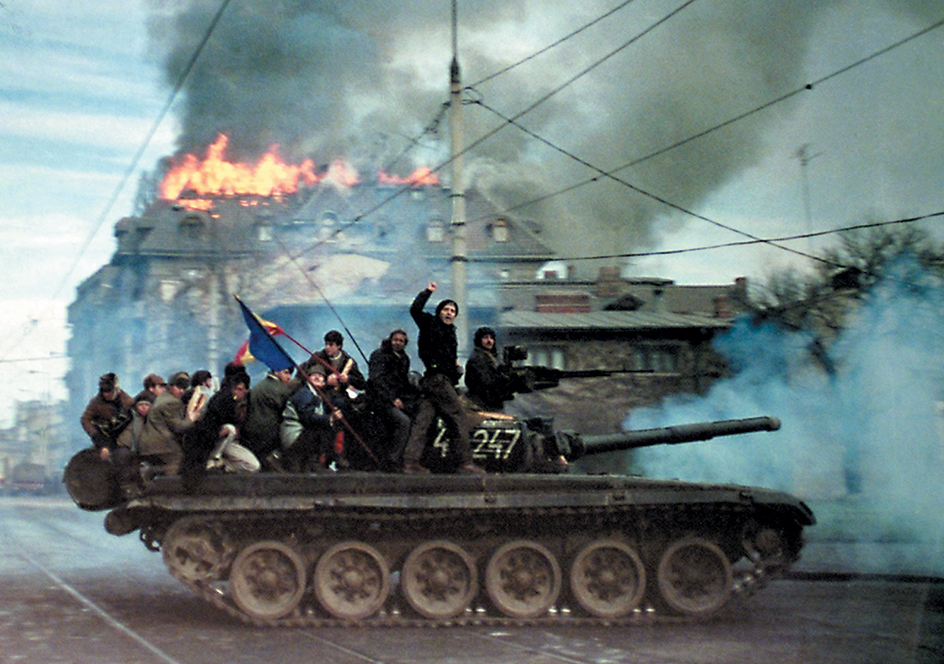
On December 22, Ceausescu and his wife, Elena, fled Bucharest during a massive antigovernment demonstration. However, they were soon captured by the army. A secret trial took place and Ceausescu and his wife were charged with murder and embezzlement of government funds. They were found guilty and were executed on December 25. The National Salvation Front, a group made up chiefly of former Communists, took control of the government. Ion Iliescu, leader of the Front, became the acting president. The Front canceled a number of Ceausescu’s restrictions on freedom. Free multiparty elections took place in May 1990. Iliescu won the presidency, and the Front also won a wide majority in the legislature. Iliescu then stepped down as leader of the Front in accordance with a law established in early 1990. The law states that the head of state cannot be a party leader.
Opposition parties complained of abuse and intimidation by members of the ruling party during the election. In mid-1990, progovernment and antigovernment demonstrators clashed on the streets of Bucharest. Hundreds were injured. Large antigovernment demonstrations continued in the early 1990’s, often in protest of economic conditions. In late 1991, following strikes and riots staged by miners, the government of the National Salvation Front resigned. It was replaced by a coalition government dominated by the Front. Iliescu remained president. New national elections were held in late 1992. Iliescu was reelected president. But in this election, he represented a political party called the Democratic National Salvation Front. This party broke away from the National Salvation Front in 1992. In 1993, it changed its name to the Social Democratic Party of Romania.
Recent developments.
Ion Iliescu’s government was dominated by former Communists who favored only limited political and economic reform. In 1996, Emil Constantinescu, who supported more rapid reform, was elected president. His party, the Democratic Convention of Romania, also won the most seats in the legislature. However, the progress of economic reform in Romania remained slow. In 2000, Iliescu again won the presidency.
In 2004, Romania joined the North Atlantic Treaty Organization (NATO). NATO is a military alliance that includes the United States and many European nations. Later that same year, Romanians elected opposition leader Traian Basescu as president. Romania joined the European Union (EU) on Jan. 1, 2007. 
In April 2007, Romania’s parliament voted to suspend President Basescu on charges of abuse of power. Some members of Romania’s parliament accused Basescu of violating constitutional laws and manipulating the country’s Supreme Court. Basescu denied the charges and refused to resign. Nicolae Vacaroiu, Romania’s Senate leader, was appointed interim president during Basescu’s suspension. In May 2007, Romanian voters rejected his suspension, and Basescu was reinstated as president. In 2009, Basescu was narrowly reelected to a second term as president.
Romanians chose Klaus Iohannis to become the nation’s next president in 2014. Iohannis became the first ethnic German to lead modern Romania. He was reelected in 2019.
